Key takeaways:
- Mix car wash soap in correct ratios: 1 part soap to 10 parts water for standard washes, adjusting as needed for tougher jobs.
- Use quality soap for better cleaning results and enhanced vehicle shine; consider ingredients like wax for added protection.
- Utilize proper mixing tools, such as good-quality jugs and immersion blenders, to improve foam quality and ease of use.
- Adjust water temperature and use foam cannons for optimal foam generation, ensuring an enjoyable washing experience.
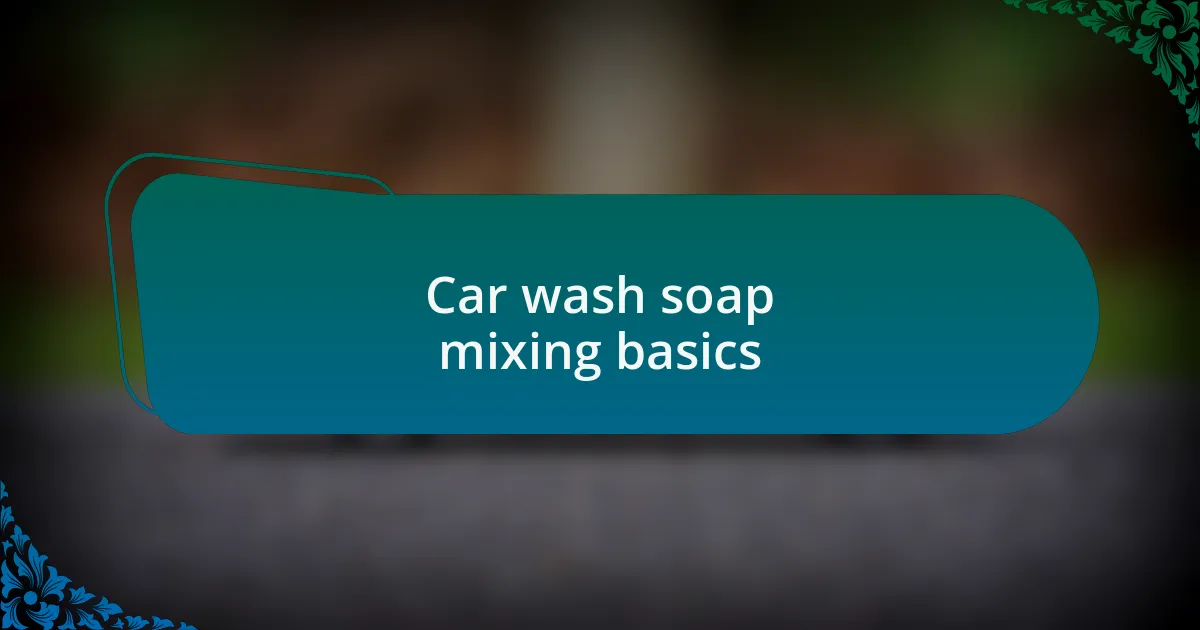
Car wash soap mixing basics
When it comes to mixing car wash soap, understanding the right proportions is fundamental. I remember the first time I over-concentrated my soap; it left a thick residue that took ages to rinse off. It’s those moments that teach you the value of following manufacturer recommendations, as they guide you towards achieving that ideal balance—more foam, less hassle.
A common question I get is, “How do I know if I’ve mixed it correctly?” From my experience, a good indicator is the suds quality. If the soap is too diluted, you won’t see much foam, and the cleaning power diminishes. I’ve learned that experimenting with different brands and formulations can help find the perfect mix that works for your specific needs.
Lastly, always consider the water you’re using for mixing. Hard water can react negatively with some soaps, leading to insufficient cleaning. I found myself struggling with stubborn dirt after using hard water, which prompted me to switch to distilled water for mixing. It made a world of difference, and I can’t emphasize enough how attentiveness to water quality can elevate your car wash game.
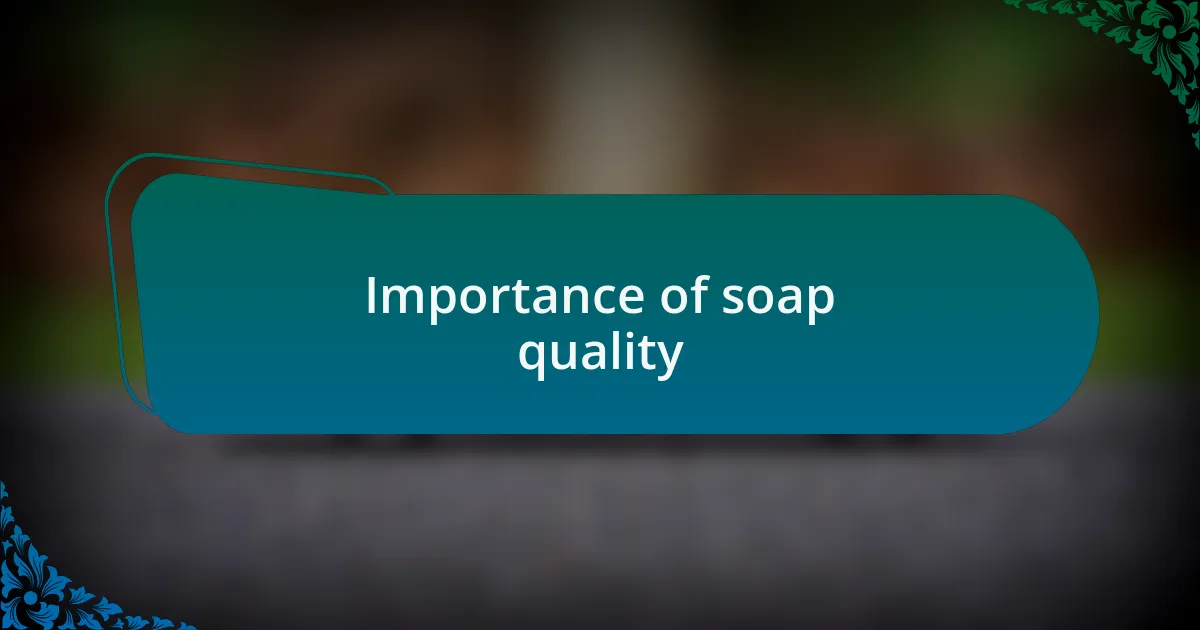
Importance of soap quality
The quality of car wash soap can significantly affect both the cleaning process and the overall finish of your vehicle. I recall a time when I thought all soaps were interchangeable, so I opted for a budget brand. It left my car looking streaky, and I realized that investing in high-quality soap made a noticeable difference in shine and protection.
I find it fascinating how the ingredients in car wash soap can vary dramatically between different brands. Some contain wax, which not only cleans but also adds a layer of protection to the finish. Have you ever considered what’s in your soap? I dug into the details of my favorite brand and learned that their unique blend helps repel dirt. That small discovery has changed how I approach every wash.
Ultimately, using high-quality soap is about building trust with your tools. When I switched to a soap with vegetable-based surfactants, it made washing more enjoyable and less of a chore. I can’t stress enough how much satisfaction comes from knowing that I’m using a product that cares for my car and the environment at the same time.
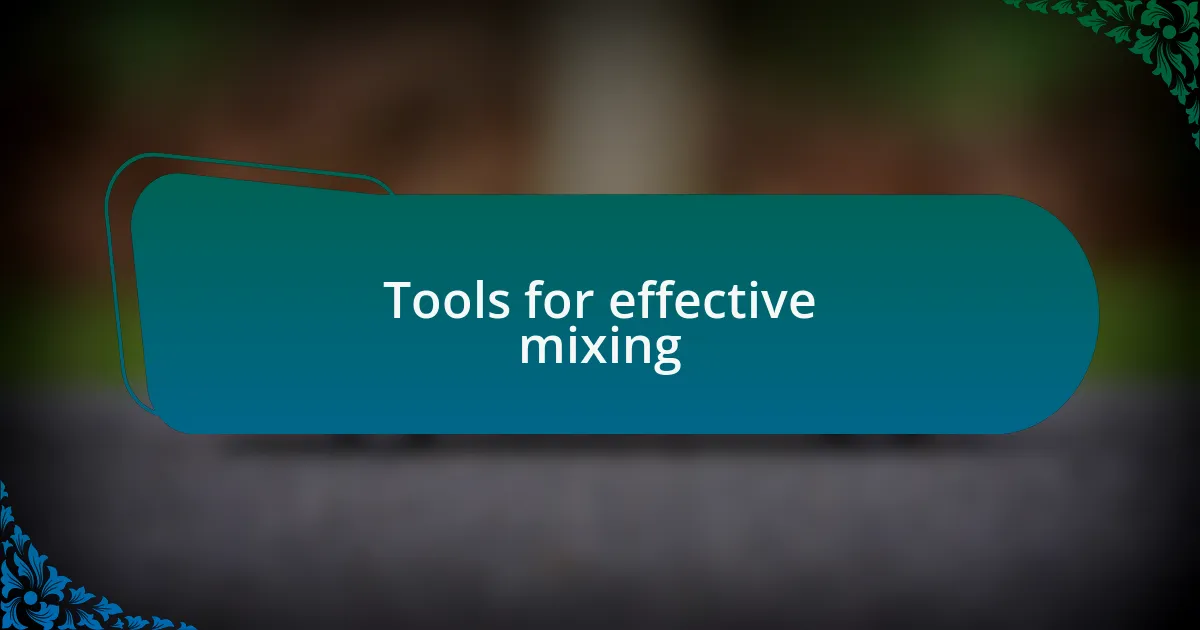
Tools for effective mixing
When it comes to effective soap mixing, having the right tools is crucial for achieving a well-blended solution. I’ve found that a good-quality mixing jug, preferably made of durable plastic or glass, not only withstands the chemicals but also allows for precise measurements. There’s something satisfying about seeing the soap come to life as it mixes—don’t you love that feeling when everything looks just right?
In my experience, a handheld mixer or even an immersion blender can make a world of difference. I remember the first time I used an immersion blender to mix my car wash soap; the bubbles formed so quickly and evenly that the foam seemed to leap from the container. It not only cut down on prep time but also produced a richer lather that enhanced my washing experience.
And let’s not forget about storage containers. Having a dedicated spot for your mixed soap can help prolong its effectiveness. I like to label mine with dates and formulas, which reminds me to use them before they lose their potency. Have you ever waited too long to use your mixture and then had it turn out less effective? Trust me—keeping track of your supplies maximizes every wash and prevents any last-minute surprises.

Mixing ratios for different jobs
When mixing soap for different jobs, the ratio is key to achieving the desired results. For a standard car wash, I typically stick to a mixture of 1 part soap to 10 parts water. This ratio strikes the perfect balance: it’s concentrated enough to clean effectively without being overly harsh on paint. Have you ever been unsure about how much soap to use? Trust me, finding that sweet spot can make all the difference.
For more challenging tasks, like removing heavy grime or road tar, I sometimes ramp up the ratio to 1 part soap to 5 parts water. This increase in concentration provides the extra cleaning power needed for those stubborn spots. I still remember the time I faced a particularly messy job on a friend’s truck; that stronger mixture worked wonders, lifting the dirt effortlessly. It was almost like magic watching the grime dissolve!
Conversely, when I’m dealing with lightly soiled surfaces, I often reduce the concentration to about 1 part soap to 15 parts water. This diluted mix is gentle yet effective for a quick wash. It’s fascinating how adjustments in ratios can tailor the cleaning experience based on the job at hand. Have you tried modifying your mixing ratios? Discovering what works best for each situation can elevate your car washing game significantly.
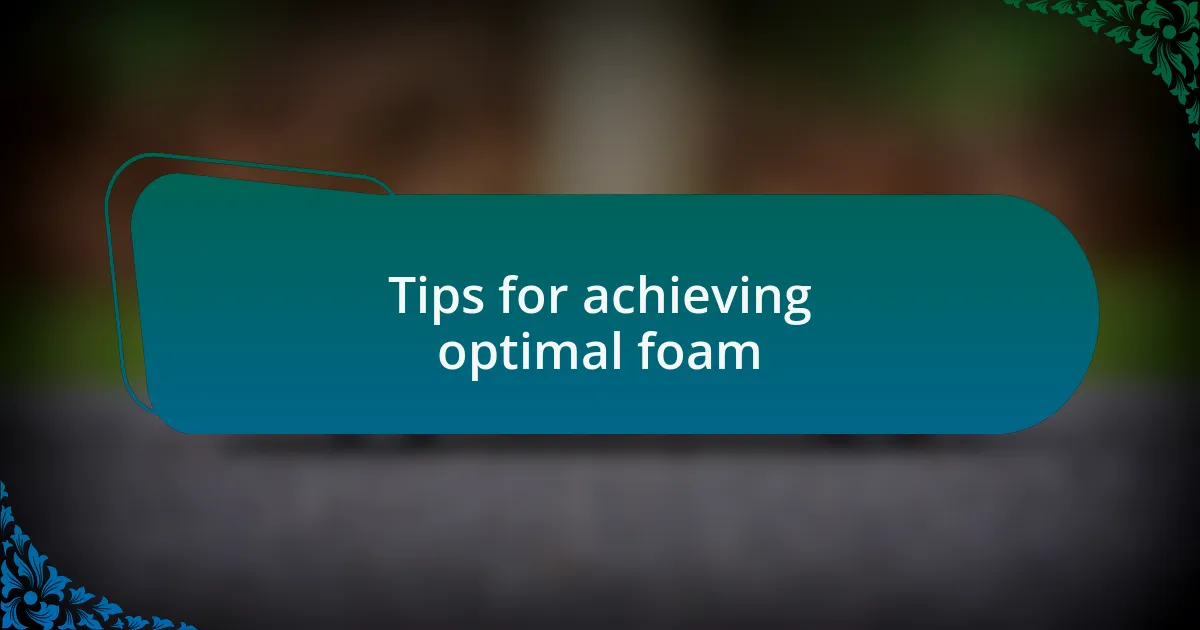
Tips for achieving optimal foam
Achieving optimal foam is all about knowing your soap and water blend. I find that using warm water can significantly enhance sudsing, as it helps dissolve the soap better. Have you ever noticed how a bit of heat can really amp up the lather? Personally, I’ve found this technique especially useful on chilly days when the foam seems to lack that extra punch.
The application method also plays a crucial role in foam generation. Using a foam cannon or a sprayer can introduce air into the mixture, creating that rich lather we all admire. I recall one afternoon experimenting with my foam cannon; the foam it produced was so thick that it clung to the car like a fluffy blanket. That visual alone made the washing process much more enjoyable!
Additionally, don’t overlook the detergent quality. I’ve learned that high-quality soaps often contain surfactants, which enhance foaming. Whenever I switch to a premium brand, the difference in foam quality is palpable; it transforms the wash from a chore into a fun and satisfying experience. What about you? Have you experienced the joy of a good soap that just delivers?

Personal techniques for soap mixing
When it comes to soap mixing, I’ve discovered that the order of ingredients matters a great deal. I usually start with the soap first, adding the right amount before slowly incorporating water. This method not only prevents lumps but also ensures an even consistency that really amplifies the lather. Have you ever dealt with gritty soap mixtures? It can be so frustrating, but this little technique has helped me keep that issue at bay.
One habit I’ve developed is to mix my soap using a whisk instead of just shaking the container. It feels a bit old-fashioned, but trust me—it makes a difference. The whisk aerates the mixture, allowing air to blend in and enhancing the foam quality. I remember the first time I did this; the foam had a light, airy texture that made the whole process feel more like a spa day rather than a chore. It’s these small changes that can really elevate your car wash experience.
Lastly, I always keep an eye on the pH level of my soap mix. Understanding this has been a game changer for me. I’ve learned that a soap with a balanced pH not only provides better foam but is also gentler on the paintwork. If you’ve never considered this aspect, I highly recommend looking into pH-balanced formulas. They can protect your vehicle while still delivering that lush suds. Have you made adjustments based on pH before? It can be a bit of trial and error, but it’s worth the effort for that glossy finish.
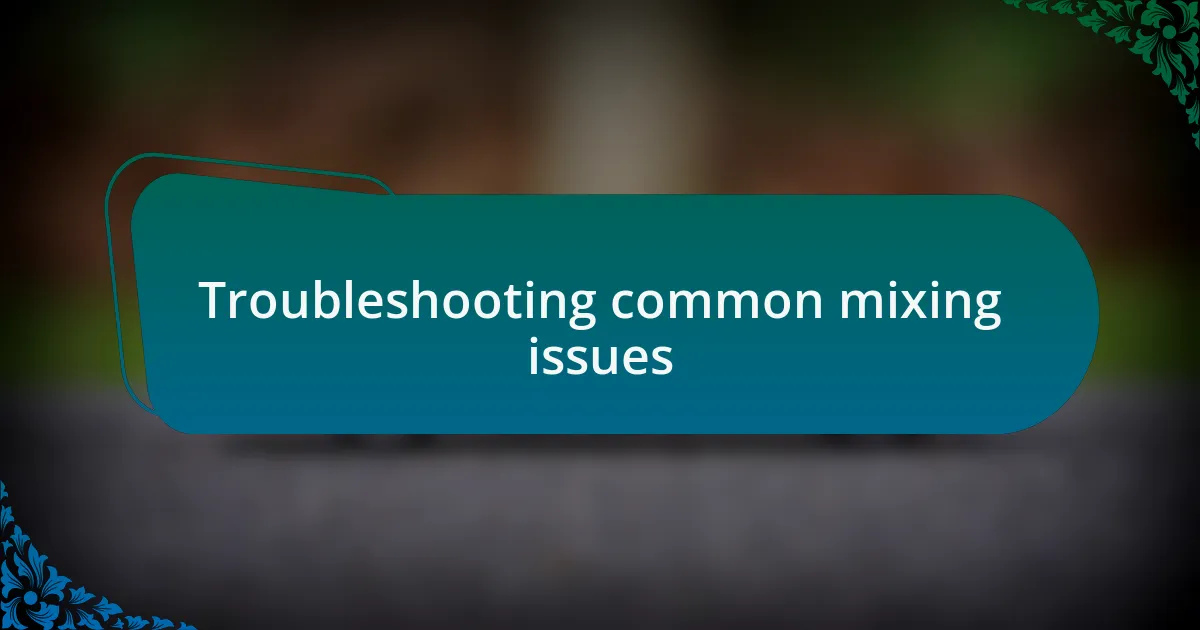
Troubleshooting common mixing issues
When mixing soap, one common issue I’ve faced is separation after blending. It’s disheartening to see the layers form, especially after you’ve put in the effort to mix. I’ve learned that using a consistent temperature for both the water and soap helps prevent this. Have you noticed how temperature can drastically affect consistency? A few degrees can make all the difference!
Another challenge I’ve encountered is bubbles that form too quickly and then disappear. It took me a while to understand that adding soap too rapidly can cause this—like when you shake a soda can too much before opening it. I now take my time with the addition, allowing it to settle and blend. This slower approach not only preserves bubble integrity but makes the whole mixing process more enjoyable. Have you ever rushed through this step only to end up with a frothy mess?
Finally, I’ve had my share of mixing mishaps where the scent didn’t blend as I expected. At first, I felt defeated, thinking I’d wasted a batch. But I soon realized that adding fragrance oils at the right moment can improve the overall aroma. If you’re facing off with an overpowering scent, consider using a dropper for more precise control; it was a game changer for my mixes. How often do we think about the balance of fragrance while mixing? It’s all about the harmony you create!